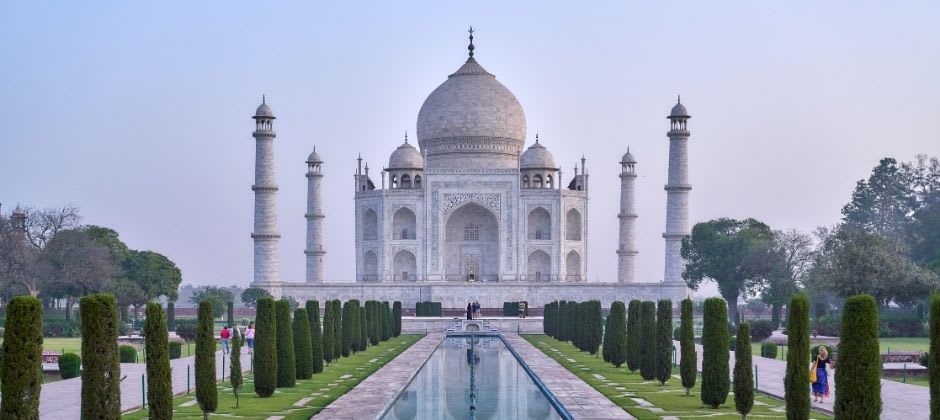Study in India: Housing & Living Costs
The cost of living in India is steadily rising, but is still much lower than in the US and many European countries. India’s cost of living is also markedly lower than many other popular study abroad destinations further east, like China, Japan and South Korea. The cost of living, as in most countries, is higher in the capital and other large cities.

The cost of living in India is steadily rising, but is still much lower than in the US and many European countries. India’s cost of living is also markedly lower than many other popular study abroad destinations further east, like China, Japan and South Korea. The cost of living, as in most countries, is higher in the capital and other large cities.
Even though New Delhi is the capital, it’s actually Mumbai that is the largest city. Most international students end up in one of these two cities. As they both have a fairly similar cost of living, these costs will reflect the cost of living in New Delhi. Some average costs are (in INR and USD):
- Monthly rent (1 bedroom apartment): 18,200INR ($245)*
- Utilities (monthly average): 5100INR ($70)
- Monthly public transport pass: 1000INR (£13.50)
- Meal (inexpensive restaurant): 300INR ($4)
- Coffee: 140INR ($1.90)
- Milk (1 liter): 50INR ($0.70)
- Eggs (dozen): 70INR ($0.95)
- Water (1.5 liters bottled) 25INR ($0.35) **
- Chicken (1kg): 440INR ($6)
- Beer (bottle): 120INR ($1.65)
- Bread (loaf): 35INR ($0.50)
*Some larger Indian schools have student dorms. These are called halls of residence in India. Many halls of residence include utilities, sometimes even the internet, as part of the rent. Halls of residence normally cost between 51,300INR ($700) and 146,600INR ($2000) per academic year, depending on the type of room and location.
**It’s not safe to drink the tap water in most of India, so you’ll need to factor bottled water into your budget.

The average cost of living in India is 27,265INR ($2,620) a month. This figure includes rent. You can keep food costs even lower by buying in markets and from street vendors, as many locals do. Just make sure to barter unless the price is clearly marked! This also helps you to get a more authentic sense of India than in a supermarket.
Most international students choose to live in halls of residence throughout their time in India. This is easier as, should you move, you must let the authorities know. This can be a costly and bureaucratic process.
Some halls of residence have private rooms with shared kitchens. Others are more like US-style dorms, with shared bedrooms too.
Healthcare in India is improving in cities, especially in private clinics. However, unless you have some form of Indian documentation, you’ll have to go to a private clinic. Many of these clinics even offer payment plans for more costly procedures. Healthcare in more rural areas is still underdeveloped.

India is both cash and card-driven. It all depends on where you are. Card payments are becoming more and more common in big cities, but, at street stalls and in less urban areas, you’ll need cash. Outside of cities, you’ll probably struggle to find an ATM.
Bank notes can be recalled at little notice, so be sure to familiarize yourself with the current designs and be prepared to queue at a bank to swap out old notes at short notice. Bank notes are in poor condition will likely be rejected at most places. You can also swap these out at many banks. Be sure to do this at a legitimate, certified bank branch. Banks sometimes charge a very small fee for swapping out notes that are damaged but still current.
Study in India
India is a country with a world-famous cuisine, magnificent architecture and a welcoming atmosphere. This section tells you more about this vast country.
Education in India
Want to learn about how the higher education system works in India? India is a great destination for a variety of students, given its good programs, lower fees and its world-renowned culture and history. Take a minute to find out more about the structure of the education system in India!
Student Visas
Do you need a visa to enter India to study? Learn more about the student visa process, and what you need to enter the country, depending on your citizenship.
Tuition Fees & Scholarships
Tuition fees for degree programs in India are fairly similar. Both international and domestic students are expected to pay tuition fees in India. We've put together information on how this works, and on scholarships, in this section.
Language & Culture
India is a country rich in history and culture. Find out more about what the country offers in terms of language, culture, and more! We also talk about how to stay safe in India in this section.
Application Process
Learn more about how to apply to Indian schools and the documentation you need to do it in this section.
Programs
Ready to look at education in India? Use our search engine to find and compare top programs in India today!

Author
The Keystone Team is comprised of experienced educators and advisors dedicated to providing valuable resources and advice to students all over the world.